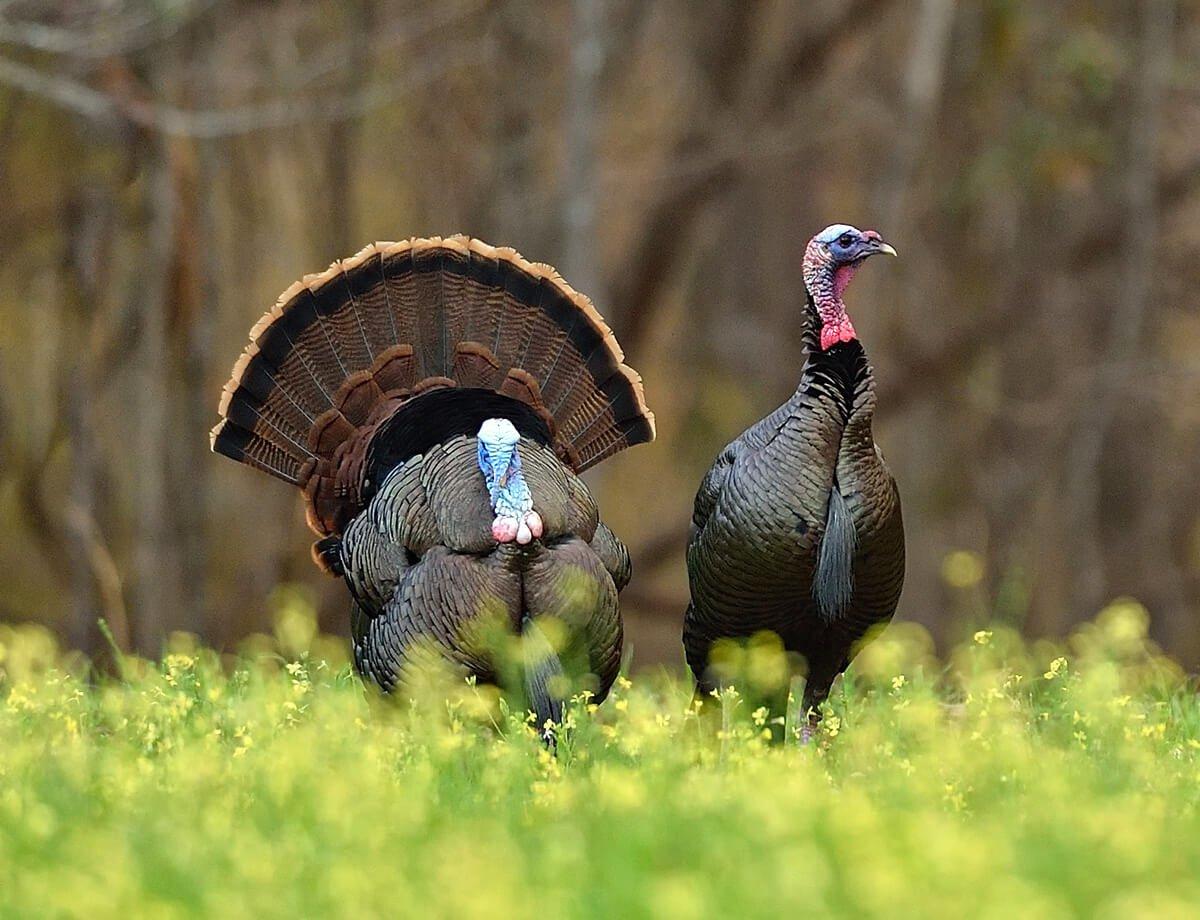A veteran turkey hunter battles with a pair of tough public land toms during the final days of season
The mountain had an official name, which I can no longer remember. But it doesn't really matter. Heart Attack tells you everything you need to know.
The spacious flat top was, and no doubt still is, a good place for a gobbler, but it's not a friendly place for a gobbler hunter. Heart Attack isn't particularly tall - it rises only 500 feet above the surrounding terrain - but every slope leading to that 200-acre plateau is steep as a cow's face, and in some places the slope is vertical and even reverses course into craggy overhangs. And as if the steep terrain wasn't enough, most approaches to the summit are cobbled with round rocks the size of grapefruits. It takes considerable commitment for a hunter to get there at all.
But every season, without fail, there was a gobbler on that flat summit. Sometimes two. That's why every spring, from 1985 until I moved away in 2002, I sweated and strained and clawed my way to the top of Heart Attack Mountain. More years than not, I even carried a gobbler back down.
Blind Faith
There were five days left in the '02 spring season when I finally climbed Heart Attack. I'd put it off, and I was going in cold, guided only by my faith in the spot. While I was still inching my way up the final hundred feet, I heard two gobblers. But I was running late: I'd misjudged how long the climb would take, and they were already on the ground when I reached the summit. My breath was short and my pulse was pounding, but there was no time for a break.
Calling the mountaintop flat is a bit misleading - it's a relative term in the Ouachitas. There was still enough roll and pitch to get inside the 100-yard ring, and I sat with confidence. The gobblers had joined up immediately after fly-down. I was feeling good, and scratched out my first call.
The results weren't exactly as desired. The birds had been gobbling every 20 seconds, but they clammed up following my initial string of yelps. For a full 10 minutes, there was silence. It wasn't until a nearby crow sounded off that they finally gobbled again. Worse, they'd moved another 200 yards away. I gave chase, but they'd lost their momentum and didn't talk enough for me to keep track. On those rare occasions when they did gobble, each revealed the birds were farther away. The last gobble came at 10 a.m., and it was so far away and faint I could barely make it out.
The next morning, I started climbing earlier. I was red-faced and sweating, but on top of the mountain once the gobbling started. A resident barred owl saved me the trouble of calling, and the same two gobblers answered him. I was within 200 yards from them - and almost exactly in between.
So I settled in. They gobbled plenty on the roost, and since I couldn't hear any hens, I hoped they would get together again as they had the day before. I stayed quiet and waited for things to unfold. It was hard to resist feeling smug.
Hard, that is, until the gobblers flew down in opposite directions, leaving me in a rapidly enlarging donut hole. I never recovered, and like the day before, I never heard a gobble after 10 a.m.
On the third day, both gobblers cranked up right on schedule. I got as close as I thought wise to the harder-gobbling bird, about 75 yards. He flew down toward me, but still out of range, and the woods were too open for me to call to him while he was so close and in plain sight. He messed around for a half-hour within 10 feet of his landing spot, strutting and gobbling. When he finally dropped out of view into a slight depression, I stroked out a run of soft yelps. He gobbled hard, walking on my last notes.
I shouldered my gun and snicked the safety off. Twenty-five minutes later my arms were aching and I lowered the gun. At 25 minutes and five seconds, he stepped out from behind a shortleaf pine at 15 yards, looking hard for the hen. Failing to spot her, he stepped behind the tree. I got my gun back to my shoulder, and never saw or heard him again.
On the fourth day, the same scene unfolded: Both birds gobbled from a couple hundred yards apart. This time, I picked the quieter bird and got within 50 yards. He sailed out at normal fly-down, but evidently, he and his buddy has patched things up because they got back together. I followed the two traveling gobblers as they steadily increased their lead until they quit gobbling altogether at 10 a.m.
Last Chance
I debated going elsewhere on the last day of season. But it's hard to leave gobblers that you've hunted four days running, and I found myself seated between two widely spaced gobblers on the roost. Again, they got together on the ground. Again, they led me around Heart Attack's flat crown. Again, they shut up at about 10 a.m.
But this time, I didn't leave. Instead, I crept to where I'd heard the last gobbling, built a makeshift blind out of a few sticks, and took a nap. When I woke up, I made a series of lost calls, waited 30 minutes, then did it again. And again.
It was approaching 3 p.m. when I heard leaves crunching behind me. I scrooched into my hide until a black blob appeared in my right peripheral vision. A second blob joined him.
The longbeards slowly worked their way into my field of view. When they were past me, I slid my gun around, keeping it low until it was pointing the right direction.
Quick-drawing is almost always a recipe for disaster. But when a gobbler is looking for a hen, you can often get away with a slow, smooth gun mount. You won't have all day, but the gobbler is expecting movement and will usually come to attention long enough for you to get on him and pull the trigger.
Which is exactly what happened. They looked like twins standing there, and the one that didn't leave weighed 22 pounds. That's big for a Ouachita gobbler, plus he had the kind of spurs that make turkey hunters grin.
I haven't been back to Heart Attack, and I'll probably never go there again. I know that mountain is no place for old men, and I was already 55 years old in 2002. But if my legs and lungs would still allow, I wouldn't hesitate to walk in blind come spring.
Because there'll be a gobbler or two up there. I know that, too.
More Realtree turkey hunting.









